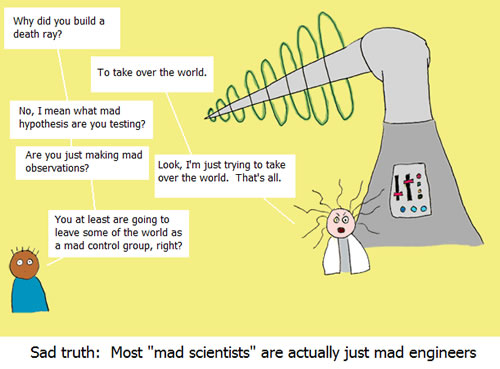Why PDFs drive me crazy
I’ve said it before and I’ll say it again. Please, please don’t put anything on your website as a PDF unless I actually need to print it out.
Today, this rant is brought to you by the Durham County Board of Elections. I wanted to find out about early voting for the municipal primary, which I’d heard starts today. When I clicked on “Early Voting and Primary Election Information,” I got…a PDF. Clearly it’s their print flyer. Since they’d already put it together, they figured it was easiest just to throw the PDF up on the web.
So instead of this process:
- Click on link
- Read new page
I have this process:
- Click the link
- Browser appears to load for a couple of seconds, then pops up a dialog box asking me whether to open or save the PDF
- Choose “open” and click OK
- Watch status bar in downloads window
- Wait a couple seconds for Preview to start up and load the downloaded PDF
- Read PDF
- Close Preview window and switch back to browser
Now I have a PDF cluttering up my Downloads folder. I’ll have to decide whether I should keep it for reference (and file it where?) or delete it.
It’s an example of a bigger problem that’s everywhere: web, software, hardware. Developers and engineers make stuff so it’s easiest for them to make — instead of making it so it’s easiest for others to use.
Mark Hurst , who runs the blog Good Experience, recently gave an example of this from a customer experience perspective. He just wanted a company to stop sending him email, but they were focused on the difference between marketing email and transactional email within their organization. He says, “Building a successful company these days means creating a good experience from the customer’s perspective, not from the company’s perspective.”
I like to put it this way: The system should accommodate the user, rather than the user accommodating the system. This doesn’t mean “dumbing things down.” It just means you have to stop thinking from your perspective — What’s the easiest way to make this? — and start thinking from your user’s perspective — What do I want to do? How can I do that using this system?
So when you put something on your website, consider what the user wants to do with it. If it’s a form they need to sign, they probably need to print it. If it’s a journal article, they probably want to download it and either print it or read it on an e-reader. These things should be PDFs.
But if it’s just information they want to read? For the love of Pete. Don’t make them download a PDF to read it. Put it up in HTML.

